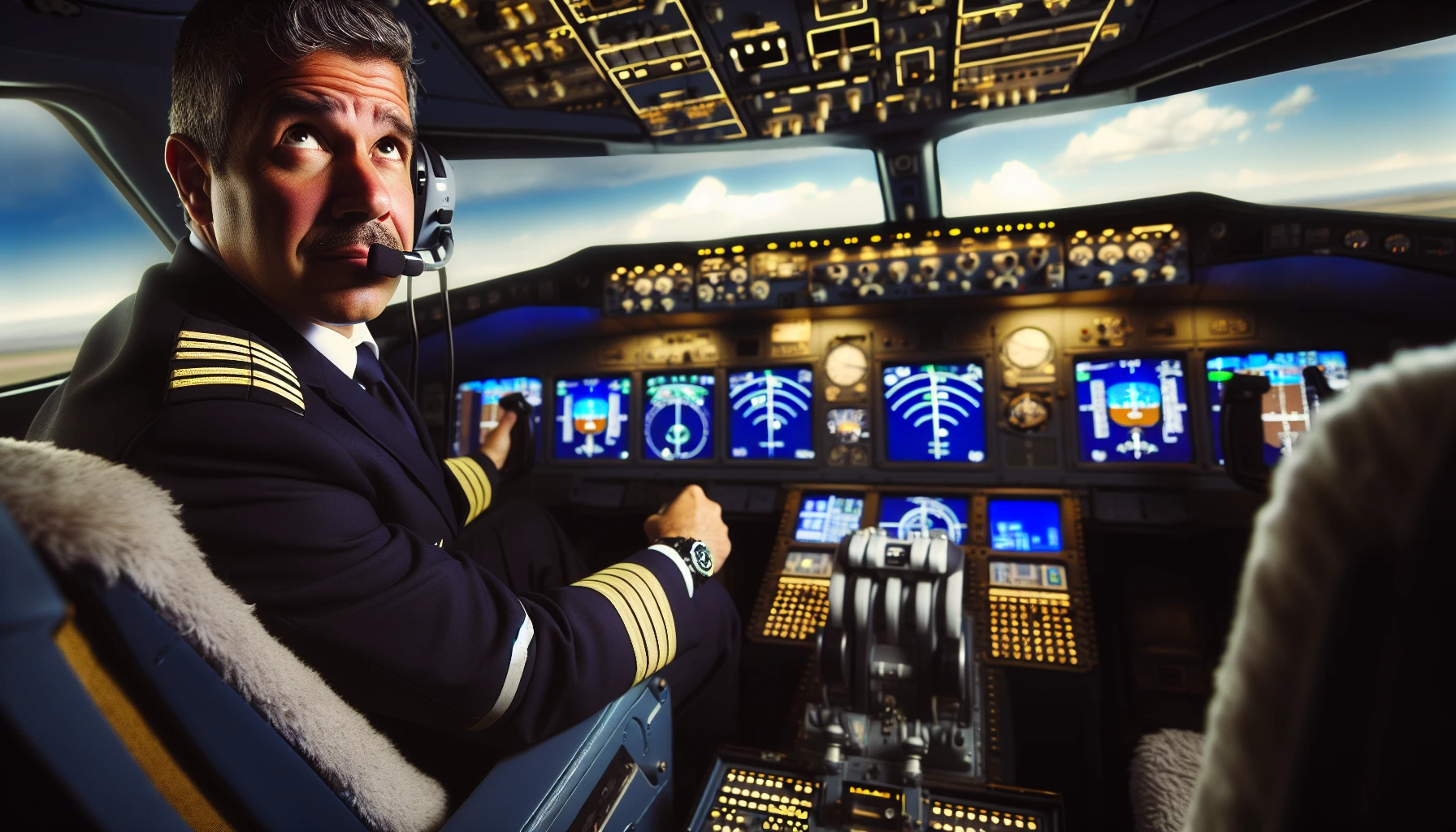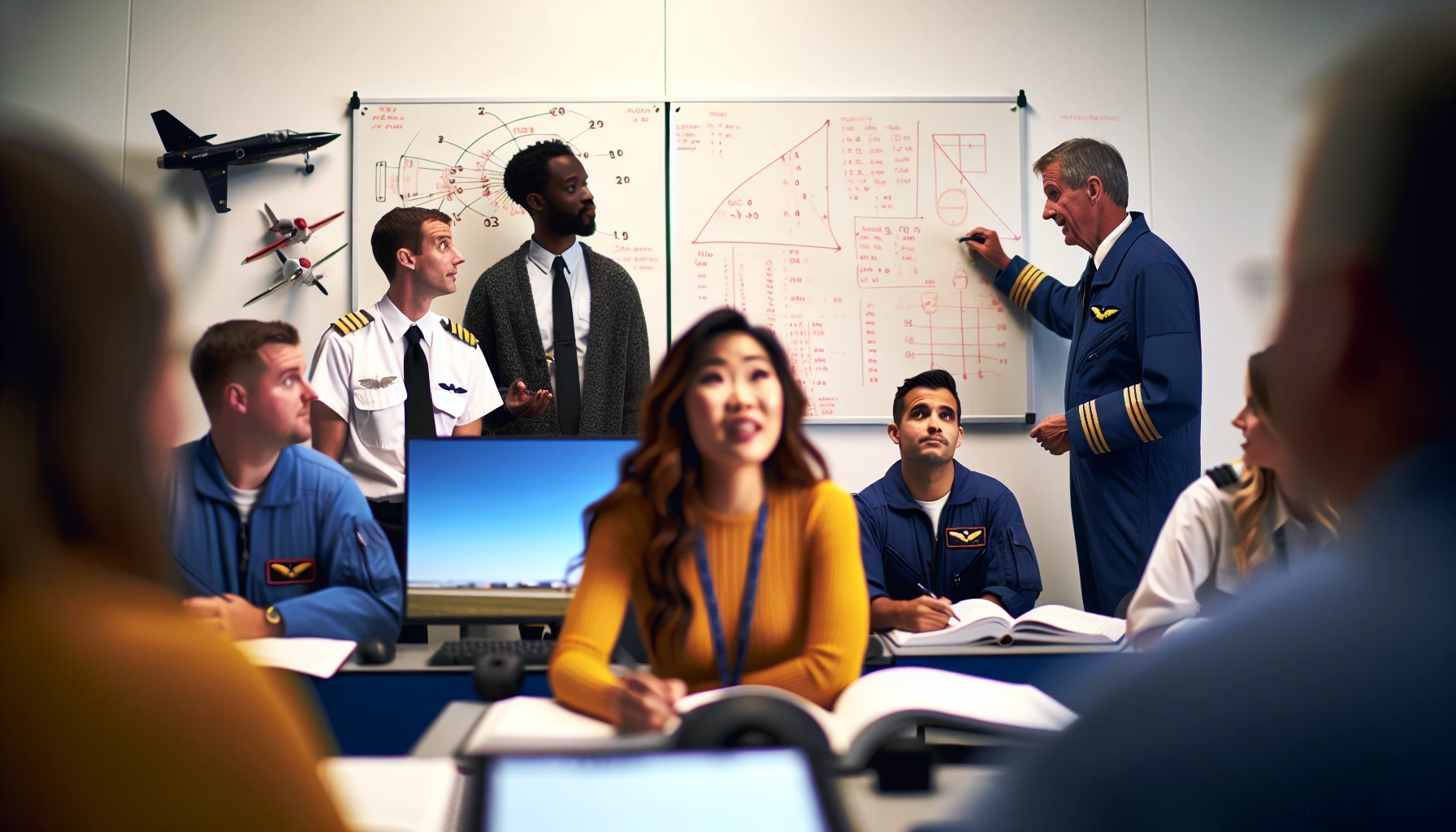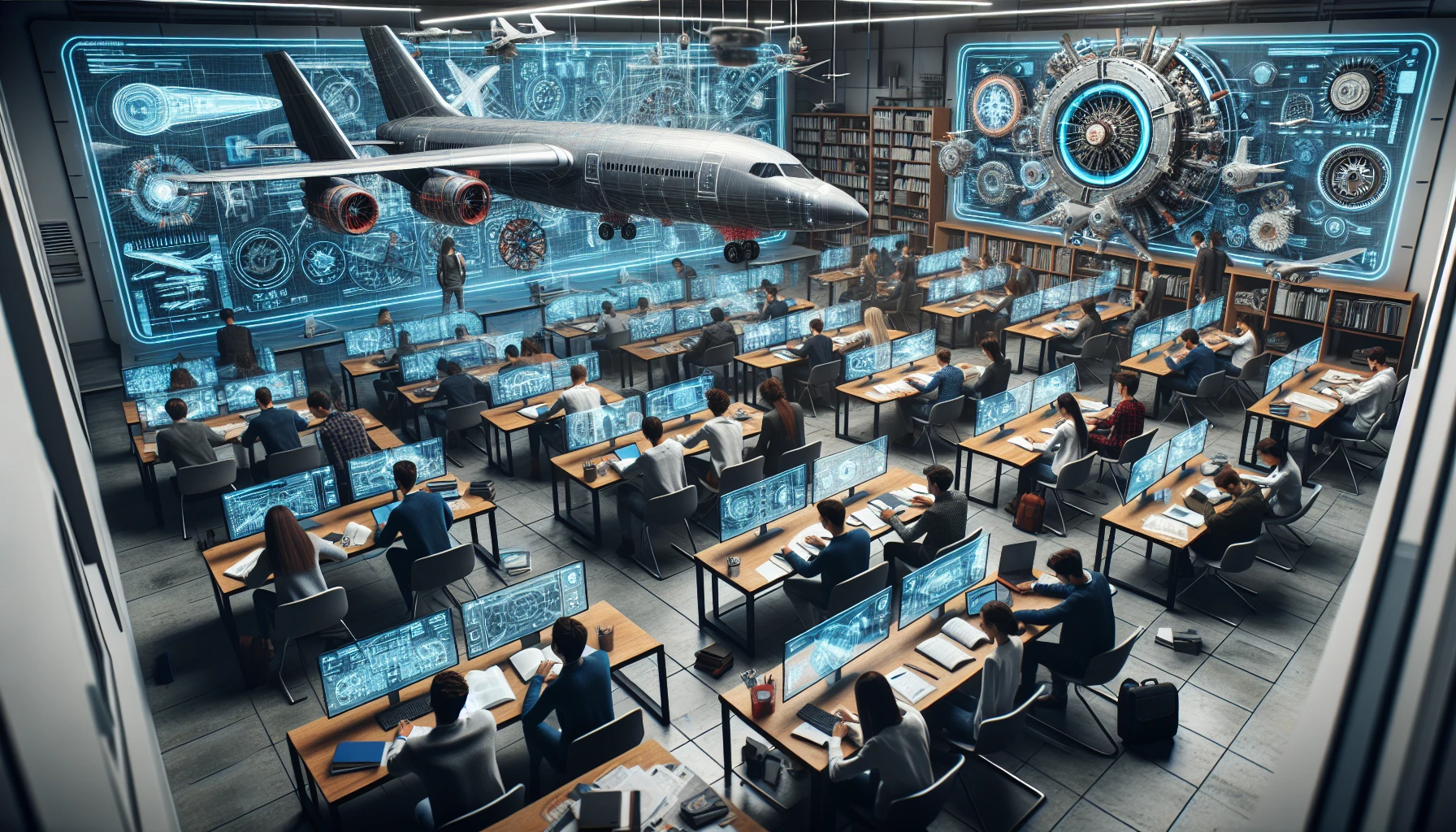A Comprehensive Guide to Earning Your Multi Engine Rating
Feb 27, 2024
A multi-engine rating can open up a world of possibilities for pilots, enhancing safety, versatility, and potential career advancement. But what does it take to earn this prestigious rating, and how can you approach the training process most effectively? In this comprehensive guide, we’ll explore the key components of multi-engine training, compare different program options, and offer tips for success along the way.
From understanding the importance of ground school and flight instruction to choosing the right aircraft for your training, let’s embark on a journey to elevate your skills and unlock the full potential of multi-engine flying.
Key Takeaways
-
Multi-Engine Rating offers increased opportunities and safety for professional pilots.
-
Requirements include a Private Pilot Certificate, ability to show proficiency in multi-engine operations, and a valid FAA medical certificate.
-
Multi Engine Training Programs provide comprehensive pilot training curricula with personalized instruction to equip pilots with the necessary skills for safe operations.
Why Pursue a Multi Engine Rating?

If you’re considering a career as a professional pilot, obtaining a multi-engine rating can be a game-changer. Most airline pilot positions, as well as many other professional pilot roles, require a multi-engine rating, which enables you to fly airplanes with more than one engine. Even if you’re not planning to work for an airline, having a multi-engine rating can provide you with more opportunities in the future, including:
-
Long distance flights over water
-
Carrying more passengers and heavier cargo loads
-
Increasing your overall flying skills and knowledge
Aside from career advancement, a multi-engine rating offers increased safety and versatility in flying a range of aircraft types, including multi-engine planes. The demanding nature of this rating means that the quality of education is of the utmost importance, ensuring you have the skills and knowledge required to operate multi-engine aircraft with confidence and precision.
Requirements for Obtaining a Multi Engine Rating

Before you can pursue a multi-engine rating, there are a few requirements that you need to meet. According to the Federal Aviation Regulations (FAR), you must:
-
Hold a Private Pilot Certificate.
-
There is no set number of hours a pilot is required to fly in preparation for the multi engine check ride.
-
Most pilots take about 10 hours of training to properly prepare.
-
This includes at least one cross country flight and the completion of flight and ground training with a certified flight instructor.
-
The complete list of required proficiency includes:
-
Preflight preparation
-
Preflight procedures
-
Airport operations
-
Takeoffs, landings, and go-arounds
-
Performance maneuvers
-
Ground reference maneuvers
-
Navigation
-
Slow flight and stalls
-
Basic instrument maneuvers
-
Emergency operations
-
Multiengine operations
-
Night operations, except as provided in FAR 61.110 and
-
Postflight procedures
-
In addition to pilot certificate requirements, a current Federal Aviation Administration (FAA) medical certificate is necessary to fulfill the medical requirements for obtaining a multi-engine rating. With these prerequisites in place, you can begin your journey towards earning your multi-engine rating.
Pilot Certificate and Medical Requirements
To pursue a Private Pilot Certificate with an Airplane Multi-Engine Land (AMEL) rating, you must begin by getting a Private Pilot Certificate. If you don’t already have this rating, you’ll need to complete the necessary training and pass the required exams to obtain it. Additionally, you may need a commercial pilot certificate with an appropriate type rating and instrument rating, depending on your goals within the aviation industry.
Medical requirements mandate possession of a valid Federal Aviation Administration (FAA) medical certificate. Maintenance of this certificate involves keeping your Third Class Medical Certificate current and completing an online medical education course biennially to retain BasicMed privileges. Some medical conditions, such as angina pectoris or bipolar disease, may prevent you from obtaining a multi-engine rating.
Flight Time and Experience
Although there isn’t an explicitly stated minimum flight time requirement for a multi-engine rating, typically, 10 hours of flight training are required to reach the proficiency necessary to pass the practical test. Flight time in different types of aircraft is also applicable to multi-engine rating requirements. For military pilots, there may be discrepancies in the required flight time for multi-engine rating between military and civilian pilots. Military pilots may be able to utilize their flight time in military aircraft towards the flight time required for a multi-engine rating in the civilian sector, with credit varying up to 250 hours in some cases.
Your flight time and experience significantly influence your success in obtaining a multi-engine rating. More practice and skill refinement better equip you for the operational challenges and complexities of a multi-engine aircraft.
Multi Engine Training Programs

You have two main options for multi-engine training programs: Accelerated Multi Engine Training and Traditional Flight School Programs. Each option has its advantages and the suitable selection depends on your personal needs, objectives, and preferences.
Accelerated programs are designed for pilots who want to complete their training quickly and efficiently. As a pilot in command, this type of program can be an ideal choice for those looking to advance their skills and career.
On the other hand, traditional flight school programs offer a more comprehensive curriculum and a flexible schedule, allowing you to progress at your own pace and receive personalized instruction tailored to your needs.
Accelerated Multi Engine Training
Accelerated multi-engine training programs offer a variety of benefits, including:
-
Enhanced safety
-
The ability to complete training in a timely manner
These programs typically consist of two days of intensive flight training, with the checkride taking place on either the third or fourth day, depending on factors such as weather and examiner availability.
In addition to the accelerated timeframe, these programs often include online preparation courses that cover multi-engine systems, procedures, maneuvers, and performance. By participating in an accelerated program, you can potentially save time and money while receiving high-quality instruction from certified flight instructors, making it an ideal choice for those looking to pursue a career in aviation.
Traditional Flight School Programs
Traditional flight school programs for multi-engine training provide a comprehensive pilot training curriculum and offer more flexibility in terms of scheduling and personalized instruction. These programs typically cover a wide range of topics, such as:
-
Aircraft systems
-
Performance and limitations
-
Emergency procedures
-
Multi-engine aerodynamics
One of the main advantages of traditional flight school programs is the ability to:
-
Craft a schedule that meets your requirements
-
Facilitate expeditious advancement in multi-engine training
-
Collaborate with students and instructors to establish a training plan that fits your availability
-
Receive individualized training and guidance as you progress through the various stages of your multi-engine training journey.
Key Components of Multi Engine Training

Multi-engine training, including commercial multi engine, is a multifaceted process that involves several key components, such as ground school, flight instruction, and practical test preparation. Each of these components plays a crucial role in ensuring that you have a comprehensive understanding of multi-engine aircraft operations and are prepared to handle the challenges and complexities associated with flying these types of aircraft.
During your multi-engine training, maintaining focus on these key components and devoting the needed time and effort to master the skills and knowledge for safe and efficient multi-engine aircraft operation is vital.
Ground School
Ground school is an essential component of multi-engine training, as it equips pilots with the required knowledge and understanding of the intricate systems and components of multi-engine aircraft. This includes topics such as aircraft systems, multi-engine aerodynamics, and emergency procedures, which are crucial for safely operating multi-engine airplanes.
In addition to classroom instruction, ground school may also involve simulator training to practice multi-engine procedures and emergency scenarios, further reinforcing the skills and knowledge required for successful multi-engine operation. By investing time and effort into ground school, you’ll build a solid foundation for the more practical aspects of multi-engine training, such as flight instruction and checkrides.
Flight Instruction
Flight instruction is the hands-on component of multi-engine training, providing you with the opportunity to apply the knowledge you’ve gained in ground school to actual flight scenarios. During flight instruction, you’ll learn essential aircraft handling techniques, maneuvers, and procedures specific to multi-engine operations, such as takeoffs, landings, and engine-out procedures.
Regular practice of these skills and close collaboration with your instructor to identify and improve any areas of weakness is necessary for adequate preparation for the complexities of multi-engine flying. By dedicating the necessary time and effort to flight instruction, you’ll develop the confidence and proficiency required to operate multi-engine aircraft safely and efficiently.
Practical Test Preparation
In order to obtain your multi-engine rating, you’ll need to successfully complete a practical test, which consists of an oral exam and a checkride. The oral exam covers topics such as accelerate/stop/go, single-engine service ceiling, and airworthiness, among others. To prepare for this exam, it’s essential to become familiar with these topics and ensure that you’re knowledgeable about the specific responses associated with your airplane.
The requirements for obtaining a multi-engine rating include:
-
Demonstrating proficiency in English
-
Being at least 16 years of age
-
Passing a third-class medical exam (unless applying for a commercial multi engine rating.)
-
Having a logbook or training record endorsement from an authorized instructor
By thoroughly preparing for both the oral exam and checkride, you’ll be well on your way to obtaining your multi-engine rating.
Aircraft Used in Multi Engine Training

The aircraft type you train on significantly influences your multi-engine training experience. Some commonly used aircraft in multi-engine training include:
-
BE-76 Duchess
-
Seminole
-
Baron
-
Aztec
-
Baron 55
Each of these multi engine airplane offers unique features and handling characteristics that can help you develop the skills and knowledge required to operate a variety of multi-engine airplanes, including the multi engine plane.
The BE-76 Duchess, for example, is a popular choice for multi-engine training due to its individual seats for one pilot and three passengers, as well as a luggage capacity of 180 lbs. By training on a range of twin-engine aircraft, you’ll gain valuable experience and insights into the intricacies of multi-engine flying, ultimately enhancing your skills and preparing you for a successful career in aviation.
Financing Your Multi Engine Rating
The cost of obtaining your multi-engine rating, which varies with the training program and aircraft used, is an important factor to consider. Several financing options like pay-as-you-go, advance payment with credit, and pilot kit availability can help manage this investment.
The pay-as-you-go option allows you to deposit money on your account prior to or following each flight, providing flexibility in managing your training expenses. Alternatively, the advance payment with credit option enables you to make an advance payment of any amount and receive an additional percentage credit on your account, potentially saving you money in the long run. Additionally, pilot kits containing all the necessary materials and equipment for multi-engine flight training are readily accessible, further simplifying the financing process.
Tips for Success in Multi Engine Training
Choosing the right program that aligns with your goals and preferences, either an accelerated or a traditional flight school program, is crucial for your success in multi-engine training. Additionally, staying organized and diligent in your studies, as well as practicing regularly, is essential for developing the skills and knowledge required to operate multi-engine aircraft.
Being aware of common mistakes in multi-engine training can also help you avoid potential pitfalls and improve your overall performance. Some common mistakes include:
-
Not maintaining the ball in the middle during asymmetric thrust situations
-
Not becoming fully acquainted with the Engine Failure Drill
-
Neglecting to adhere to the checklist
By addressing these issues and maintaining a proactive approach to your training, you can ensure your success in obtaining a multi-engine rating.
Summary
In summary, obtaining a multi-engine rating is an important milestone for pilots seeking career advancement, increased safety, and versatility in flying various aircraft types. By carefully considering the requirements for obtaining a multi-engine rating, choosing the right training program, and dedicating the necessary time and effort to mastering the key components of multi-engine training, you can elevate your skills and unlock the full potential of multi-engine flying.
As you embark on this challenging and rewarding journey, remember to stay focused, practice regularly, and embrace the opportunities that come with multi-engine flying. The sky’s the limit!
Frequently Asked Questions
Is a multi engine rating worth it?
Having a multi engine rating can give you the option to travel in areas where single engine aircraft aren't recommended, as well as better handle any emergencies that arise. Therefore, it is certainly worth considering getting one.
What is required for a multi engine rating?
If you do not hold a Private Pilot Certificate, you need to log 40 total hours of flight time with 3 hours of instrument instruction and 3 hours of night flight instruction including a cross-country flight of over 100 NM.
If you do have a Private Pilot Certificate, there is no set number of flight hours to complete your multi engine rating. You simply need to train with an instructor, until you are ready for your checkride.
Does a multi engine rating count for high performance?
Yes, a multi engine rating can count for high performance, as long as any individual engine has more than 200 horsepower.
Is multi engine rating and type rating same?
A multi-engine rating allows pilots to fly multiple types of aircraft with more than one engine, whereas a type rating grants certification for a specific type of aircraft.
How long does it typically take to complete multi-engine training?
Multi-engine training typically takes around 10 hours of flight training to reach the required proficiency for a practical test.
